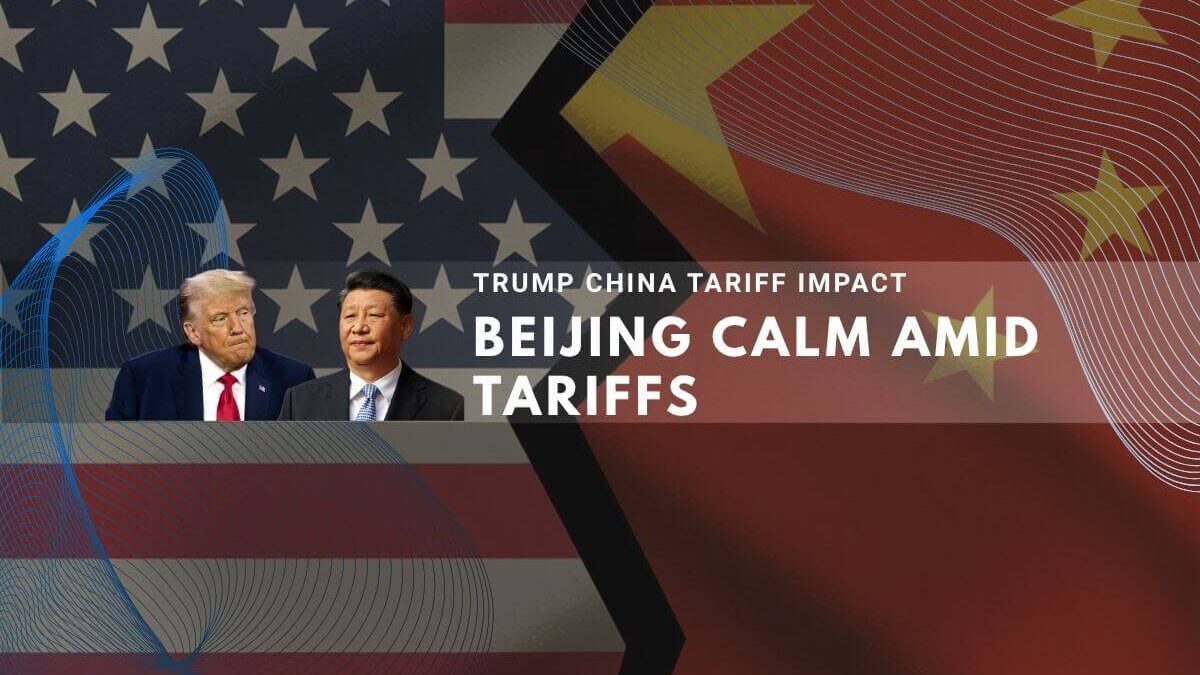Residents of Beijing reacted with indifference on Saturday to President Trump’s threat to impose an additional 100 percent tariff on all Chinese goods starting November 1, 2025. The new tariffs would bring total US duties on Chinese imports to 130 percent, marking one of the most aggressive trade measures in modern history.[1][2]
Trump Announces 100 Percent Tariff Increase
President Donald Trump announced on October 10, 2025, that the United States would impose an additional 100 percent tariff on all Chinese imports, effective November 1 or sooner. The announcement came hours after he threatened to cancel an upcoming meeting with Chinese President Xi Jinping.[3][4]
The new tariffs will be imposed on top of the existing 30 percent duties already in place on Chinese goods. This escalation brings the total tariff rate to 130 percent, approaching the 145 percent rate Trump imposed in April 2025 before negotiations led to a temporary pause.[5][6]
Trump stated the tariffs are in response to China’s new export controls on rare earth minerals, which are critical for technology manufacturing, defense contractors, and automakers. He called China’s actions an extraordinarily aggressive position on trade.[7]
Beijing Residents Show No Concern
In interviews conducted on the streets of Beijing on Saturday, residents expressed confidence in China’s ability to withstand US economic pressure. Liu Ming, a 48-year-old software company employee, told reporters he felt nothing when he first saw the news.[2]
Many Beijing residents characterized Trump as unpredictable and capricious. Liu stated that China is not afraid of any US sanctions or policies aimed at limiting the country, adding that China has the confidence and ability to do better.[2][8]
The Chinese government had not issued a public response to the tariff threat as of Saturday. The ministries of foreign affairs and commerce declined to comment when asked about the announcement.[2][9]
Market Reactions and Economic Impact
US stock markets experienced a sharp downturn on Friday following Trump’s announcement. The Dow Jones Industrial Average dropped nearly 900 points, while the S&P 500 fell 2.7 percent and the Nasdaq decreased by over 3.5 percent.[10][11]
The losses marked the worst single-day performance for these indices since April 2025. The sell-off erased all gains made in October and solidified substantial weekly losses across major market indexes.[10]
Cryptocurrency Sector Impact
The cryptocurrency sector experienced significant liquidations following the tariff threat. Investors moved toward safer assets such as Treasury bonds as uncertainty increased.[12]
Export Controls on Critical Software
Alongside the tariff announcement, Trump stated that the United States would impose export controls on any and all critical software starting November 1, 2025. This measure represents an expansion of existing technology restrictions aimed at limiting China’s access to advanced American software.[3][7]
The export controls are part of a broader strategy to counter China’s dominance in strategic sectors. The restrictions will affect software used in manufacturing, defense, and technology applications.[13]
Trade War Timeline and Context
The current escalation revives a trade conflict that began earlier in 2025. In April, Trump imposed tariffs reaching 145 percent on Chinese goods in what he called Liberation Day. China responded with retaliatory duties of 125 percent on US products before both sides agreed to pause the highest levies while negotiations continued.[5][6]
The pause was set to expire on November 10, 2025. However, China’s announcement of rare earth export controls earlier this week prompted Trump’s latest action, effectively ending the temporary truce between the world’s two largest economies.[14]
Upcoming Diplomatic Meetings in Question
Both Trump and Xi Jinping are scheduled to attend the Asia-Pacific Economic Cooperation summit in South Korea later in October 2025. However, Trump indicated on Friday that he saw no reason to meet with Xi in the upcoming two weeks, casting doubt on whether a face-to-face meeting will occur.[4][15]
Trump later acknowledged that he could retreat from the tariff escalation if China backed down from its threatened restrictions on rare earths. He stated that the November 1 deadline allows time for dialogue to occur.[13]
